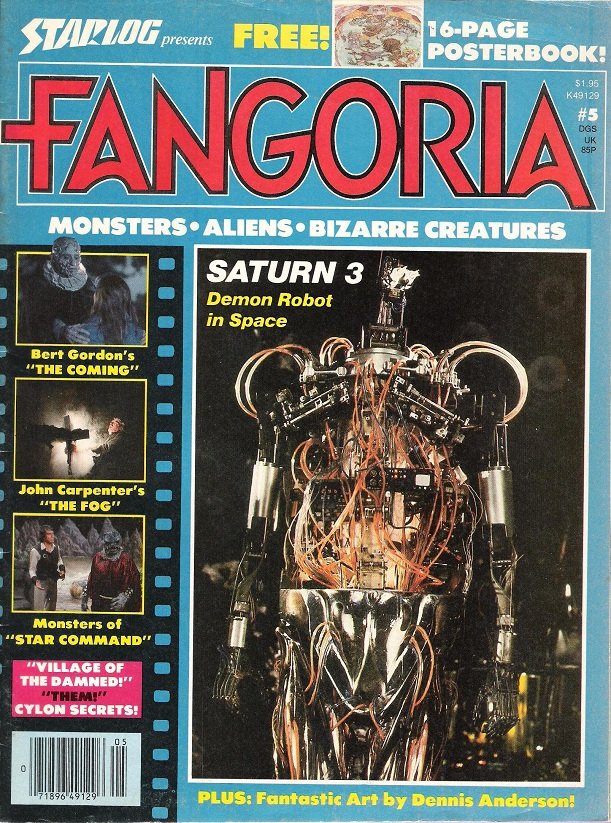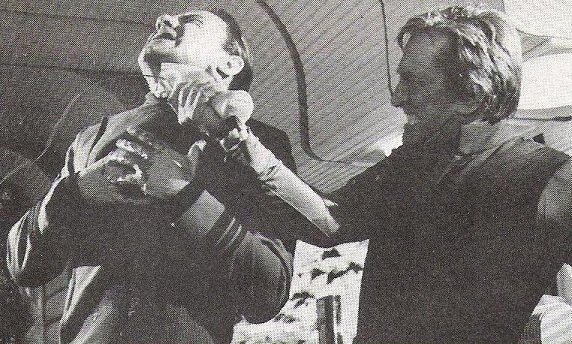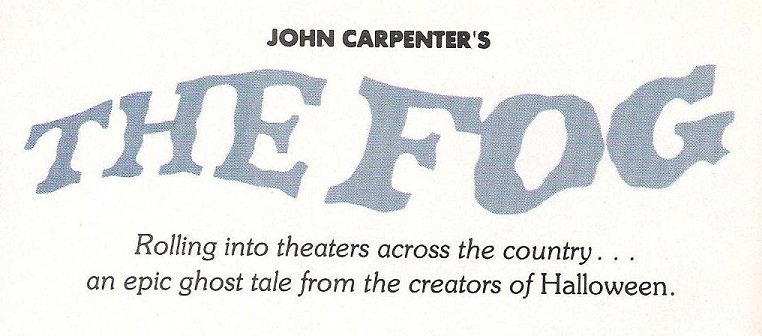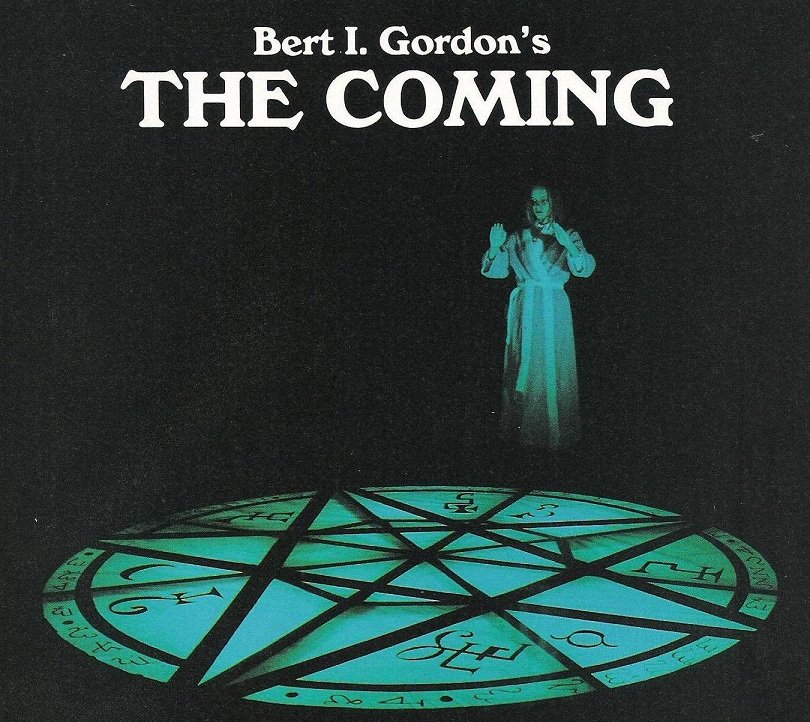THE FANGO FILES: Issue #05 - Strong-Armed By Sci-Fi Again!
One gets the sense that things weren't going well at the Fangoria offices from the editorial that kicks off Issue #5. In it, co-publisher Kerry O'Quinn takes on a very defensive tone as he insists that his magazine is innovating upon the old-school "monster magazine" format by including features for a wide range of ages, mixing in glossy paper with color images and offering unique features like "Monster Invasion" and "Fantastic Art." The editorial concludes with a request that readers fill out a survey included in the issue, which kind of betray's its forced confidence.It was a different story behind the scenes. According to editor Bob Martin, Norman Jacobs (the other co-publisher) confided to him that the magazine was losing $20,000 an issue around the time #4 hit the stands. This admission also coincided with the time period that i ssue #6 was being assembled. That issue would find horror overtaking the magazine's other elements. However, Issue #5 found itself in the same situation as #4, with sci-fi strong-arming horror into submission between its covers.The cover of Issue #5 features the infamous sci-fi dud Saturn 3 as its cover feature. Thankfully, said feature isn't as slavishly promotional as past cover features were. It even references the conflict between original director John Barry (the production designer for Star Wars, not the musician) and producer/eventual director, Stanley Donen. It also features a still of a sequence that didn't make the movie's final cut.The science fiction theme continues in articles like a retrospective on the giant-ant classic Them!, a look at how the Cylons in the original Battlestar Galactica were designed and an article on the alien makeups done for the Saturday morning live-action show Jason Of Star Command. All are decent reading but the most interesting of the aforementioned articles is, oddly, the Jason Of Star Command feature because the man who did the makeups was John Carl Buechler. He'd go on to do makeup for tons of Charles Band productions (everything from Re-Animator to Troll) and even direct a Friday The 13th sequel (part 7, for thos
ssue #6 was being assembled. That issue would find horror overtaking the magazine's other elements. However, Issue #5 found itself in the same situation as #4, with sci-fi strong-arming horror into submission between its covers.The cover of Issue #5 features the infamous sci-fi dud Saturn 3 as its cover feature. Thankfully, said feature isn't as slavishly promotional as past cover features were. It even references the conflict between original director John Barry (the production designer for Star Wars, not the musician) and producer/eventual director, Stanley Donen. It also features a still of a sequence that didn't make the movie's final cut.The science fiction theme continues in articles like a retrospective on the giant-ant classic Them!, a look at how the Cylons in the original Battlestar Galactica were designed and an article on the alien makeups done for the Saturday morning live-action show Jason Of Star Command. All are decent reading but the most interesting of the aforementioned articles is, oddly, the Jason Of Star Command feature because the man who did the makeups was John Carl Buechler. He'd go on to do makeup for tons of Charles Band productions (everything from Re-Animator to Troll) and even direct a Friday The 13th sequel (part 7, for thos e keeping score).The pure fantasy element of the early Fangoria style is also prominent in issue #5. Not only is there a Fantastic Art feature devoted to an artist specializing in fantasy novel illustrations, there is also an illustrated pull-out feature entitled "The Legendary World Of Faeries." It might be swell for fans of that genre but it's a bitter pill to swallow for members of the horror-loving contigent. Elsewhere, the "Monster Invasion" section offers an eclectic grab-bag of news blurbs on films as diverse as Demonoid, Baby Snakes and Raiders Of The Lost Ark, thus cementing the magazine's schizophr
e keeping score).The pure fantasy element of the early Fangoria style is also prominent in issue #5. Not only is there a Fantastic Art feature devoted to an artist specializing in fantasy novel illustrations, there is also an illustrated pull-out feature entitled "The Legendary World Of Faeries." It might be swell for fans of that genre but it's a bitter pill to swallow for members of the horror-loving contigent. Elsewhere, the "Monster Invasion" section offers an eclectic grab-bag of news blurbs on films as diverse as Demonoid, Baby Snakes and Raiders Of The Lost Ark, thus cementing the magazine's schizophr enia.It is worth noting at this point that there is one article in this issue that blurs the line between the magazine's fantasy and sci-fi elements: it's the second installment of the "Animated Apes" retrospective, a piece that focuses on Son Of Kong. This article is actually one of the most interesting in the issue because it takes an in-depth look at how the effects men battled with money-hungry producers on this rushed sequel.Thankfully, there are a trio of features that make Fangoria #5 worth a look to the horror fans. The first is an article on John Carpenter's The Fog by Bob Martin. It's a good article with plenty of solid information on the effects, the budget and other behind-the-scenes production details. Martin also thinks outside the box by briefly discussing whether or not horror is a boy's club with producer Debra Hill.
enia.It is worth noting at this point that there is one article in this issue that blurs the line between the magazine's fantasy and sci-fi elements: it's the second installment of the "Animated Apes" retrospective, a piece that focuses on Son Of Kong. This article is actually one of the most interesting in the issue because it takes an in-depth look at how the effects men battled with money-hungry producers on this rushed sequel.Thankfully, there are a trio of features that make Fangoria #5 worth a look to the horror fans. The first is an article on John Carpenter's The Fog by Bob Martin. It's a good article with plenty of solid information on the effects, the budget and other behind-the-scenes production details. Martin also thinks outside the box by briefly discussing whether or not horror is a boy's club with producer Debra Hill. The other two horror-centric features are a nice retrospective piece on the original Village Of The Damned that is built on a charmingly irreverent interview with director Wolf Rilla and a making-of story about Bert I. Gordon's witchcraft opus The Coming. The latter is particularly interesting because said film was never theatrically released in the U.S. (it debuted on T.V. years after the fact). It was also never issued on VHS or DVD in this country.In short, Fangoria #5 reveals itself to be a magazine in dire need of focus and a strategy to distinguish it from its monster magazine brethren. Changes would begin in the next issue that would set the magazine firmly on the path to horror genre domination. As this issue indicates, those changes arrived none too soon because the "all things to all people" fantasy approach had truly run its course.
The other two horror-centric features are a nice retrospective piece on the original Village Of The Damned that is built on a charmingly irreverent interview with director Wolf Rilla and a making-of story about Bert I. Gordon's witchcraft opus The Coming. The latter is particularly interesting because said film was never theatrically released in the U.S. (it debuted on T.V. years after the fact). It was also never issued on VHS or DVD in this country.In short, Fangoria #5 reveals itself to be a magazine in dire need of focus and a strategy to distinguish it from its monster magazine brethren. Changes would begin in the next issue that would set the magazine firmly on the path to horror genre domination. As this issue indicates, those changes arrived none too soon because the "all things to all people" fantasy approach had truly run its course.


